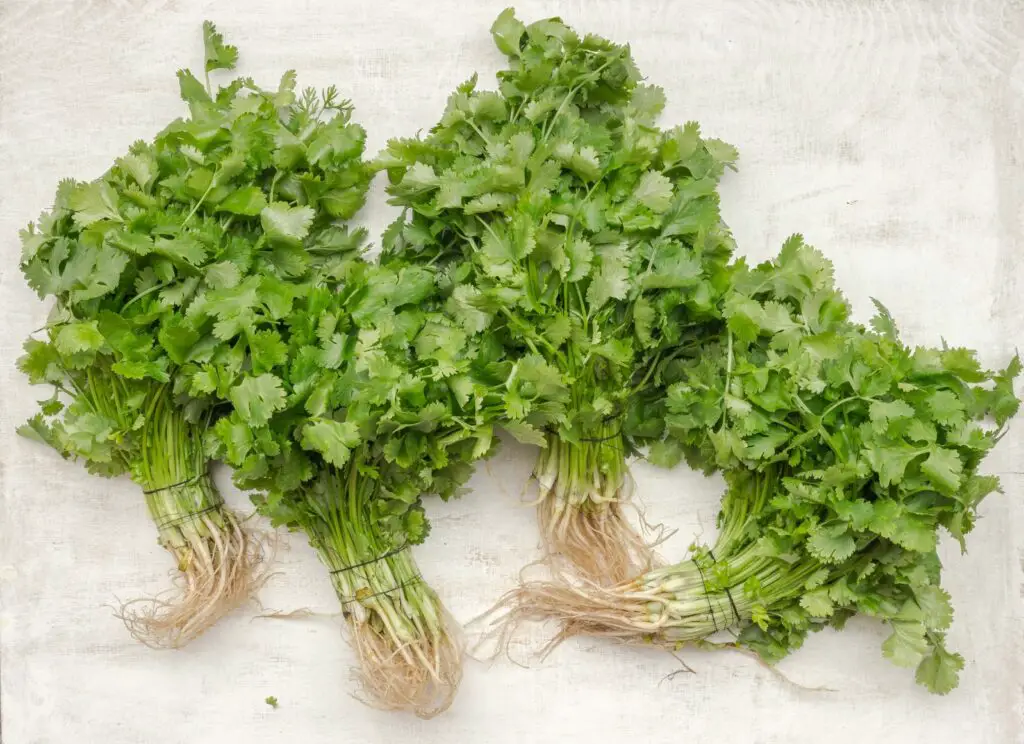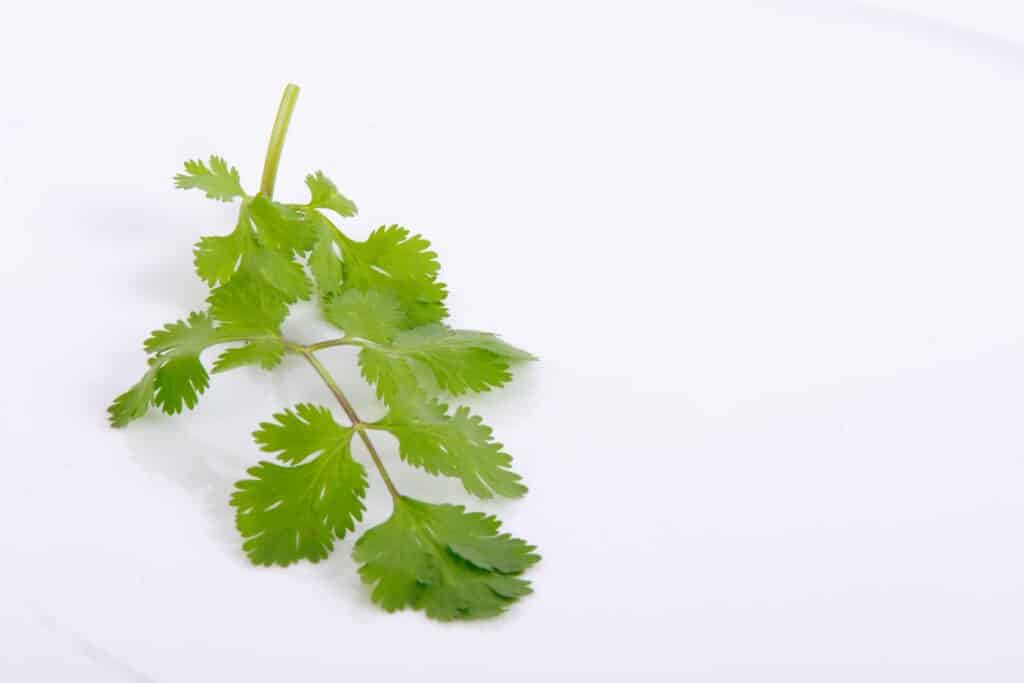Table of Contents
Parsley and Cilantro are both popular herbs used around the world, but because they both look and feel the same they often get mistaken for one another. Let’s explain what’s really happening with Parsley vs Cilantro.
While there are some circumstances where you could use them interchangeably without much difference to the overall flavour of the dish, there are some scenarios where you would not want to mistake one for the other. Because of this, it’s critical to know what the differences between the two are so that you can make the most of each herb when cooking.
In this article, we will discuss Parsley vs Cilantro. We’ll look at the two herbs individually as well as the similarities and differences they share. We’ll also be sharing specific examples of when it’s acceptable to use one with the other and when it’s not so that you can cook confidently.
What Is Parsley?
Parsley, or garden parsley, is a species of flowering plant that belongs in the Apiaceae family. It is typically found in the central and Eastern Mediterranean region but has also been found in other parts of Europe.
Parsley is a pantry staple and can be found in a variety of cuisines because it is a subtle herb that can work in lots of different dishes. In the western world, it’s commonly used in sauces, salads, and when braising meat to add a strong, fresh flavour.
Parsley is known for having a peppery and earthy flavour that brings out the flavour of other herbs and spices, but the earthiness of Parsley makes it distinctly recognisable in dishes.

What Is Cilantro
Cilantro (coriander in the UK) is another herb in the Apiaceae family. All parts of the cilantro plant can be eaten but chefs tend to incorporate the leaf at the top of the stalk in their recipes which adds a unique texture to the dish.
Cilantro also has a peppery taste but unlike Parsley, it has a more citrusy flavour making it a great addition to spicy dishes that need to balance the spice with some sweetness.
Parsley vs Cilantro: What’s the Difference
Several key differences distinguish the two herbs from Parsley and Cilantro, including:
Look
The appearance of each herb is the first thing you will notice about each herb and without looking too closely they both look incredibly similar but they’re not identical.
Parsley leaves tend to be coarser and pointier with a smoother texture. Cilantro, on the other hand, has more delicate leaf’s but by contrast, its texture is much rougher which perhaps attributes to its peppery taste.
The leaves are the part of the plant that you will most likely see in dishes that incorporate these herbs. While you can eat the stems some people find them difficult to eat and because of this most chefs tend to omit them entirely.
Culinary Uses

While both are used in a wide range of cuisines, certain cuisines utilise one herb more than the other. For instance, Cilantro is traditionally used in Mexican, Asian, and Indian cuisine, especially in recipes that corporate spice and citrus together. Some of the most popular dishes in Mexico you may have tried that incorporate Cilantro include guacamole and Pico de Gallo.
Parsley is a more versatile herb that’s found commonly in Middle Eastern recipes. Tabbouleh is a salad whose main element is chopped Parsley and it is lavished with other fresh ingredients like tomatoes, mint, onion, and bulgur wheat.
Aroma
Not only do each herb taste different, but they both have distinct aromas which is another way to help you distinguish one from the other when you are in the kitchen.
Parsley is known for having a fresh scent that is comparable to mint and because of this, it’s sometimes used in teas and liquid medicines.
Cilantro, on the other hand, is much more potent and has a spicy citrusy aroma. Cilantro is sometimes described as having a soapy smell but this doesn’t always translate well to the taste, leaving some people to omit Cilantro from their cooking.
What Are the Similarities Between Parsley and Cilantro?
Below are the main similarities between Parsley and Cilantro:
Nutritional Values
Parsley and cilantro are both low in calories, packed full of nutrients, and are a rich source of Vitamin K which is important for promoting healthy blood which reduces the chances of blood clotting and strong pounds.
Aside from a high nutritional value, Parsley and Cilantro also contain phenolic compounds which are antioxidants that protect cells and DNA from oxidative damage.
Health Benefits

Both herbs have several health benefits and because of this, they have been used in traditional medicine practices for centuries.
Interestingly, the way you cook these herbs impacts how much Vitamin K you absorb as a result of eating cilantro. For instance, cooking cilantro and parsley with fats like olive oil, avocado, or coconut milk actually increases the amount of Vitamin K your body absorbs. Conversely, stir-frying both herbs and grilling it will decrease your nutrient intake.
Research suggests that Parsley and Cilantro also contain plant chemicals that contain the following health benefits:
- Reducing blood sugar
- Reducing cholesterol
- Preventing blood clots
- Reducing blood pressure
Can You Substitute Parsley With Cilantro and Cilantro With Parsley?
The answer to this is that it depends on the recipe. Because both share a peppery aftertaste and an emerald leafy green look, you could substitute Parsley with Cilantro in a dish like Tabbouleh. You won’t get the typical minty fresh flavour you would expect from the dish, nor would it be authentic.
In a recipe like Pico de Gallo that calls for Cilantro, you could certainly substitute it with Parsley and it may even give the dish a more refreshing taste. The Parsley could be an excellent addition if you are adding Pico de Gallo on top of a particularly spicy dish like chilli con Carne.
Key Takeaways From Cilantro vs Parsley
Here are the key things to remember when trying to distinguish Cilantro from Parsley and vice versa:
- Cilantro and Parsley can be used interchangeably but only in certain circumstances
- The key differences between Cilantro and Parsley are the looks, taste, and smell
- Similarities between Cilantro and Parsley include nutritional values and health benefits










